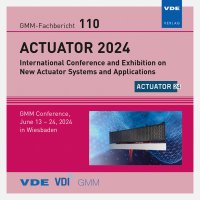The Effects of Training on Electro-Thermo-Mechanical Actuation and Sensing Characteristics of NiTi Actuator Wires
Konferenz: ACTUATOR 2024 - International Conference and Exhibition on New Actuator Systems and Applications
13.06.2024-14.06.2024 in Wiesbaden, Germany
Tagungsband: GMM-Fb. 110: ACTUATOR 2024
Seiten: 4Sprache: EnglischTyp: PDF
Autoren:
Mayer, Joshua; Scholtes, Dominik; Gorges, Tom; Rizzello, Gianluca; Motzki, Paul
Inhalt:
Commercially available shape memory alloy (SMA) wires are usually trained during the manufacturing process for a stable behavior for mechanical stresses up to 200 MPa. It is of interest in actuator design to increase this stress to gain a higher force output, increase transformation temperature and reduce installation space. Characterization of SMA wires is usually done thermo-mechanically, however in technical applications they are activated electrically. This work presents methods for a thorough and systematic characterization of SMA wires under joule heating, as well as investigating the effectiveness of purely mechanical training and thermal training compared to an untreated wire. Both training methods aim to achieve a stable behavior for SMA wires above 200 MPa as well as improved sensor properties. Having actuation and sensing in a single SMA element allows for different control strategies, reduces weight, complexity, and cost. For this purpose, a custom-built test bench, is used to perform electro-thermo-mechanical characterization and training of SMA wire specimen directly from the spool.


